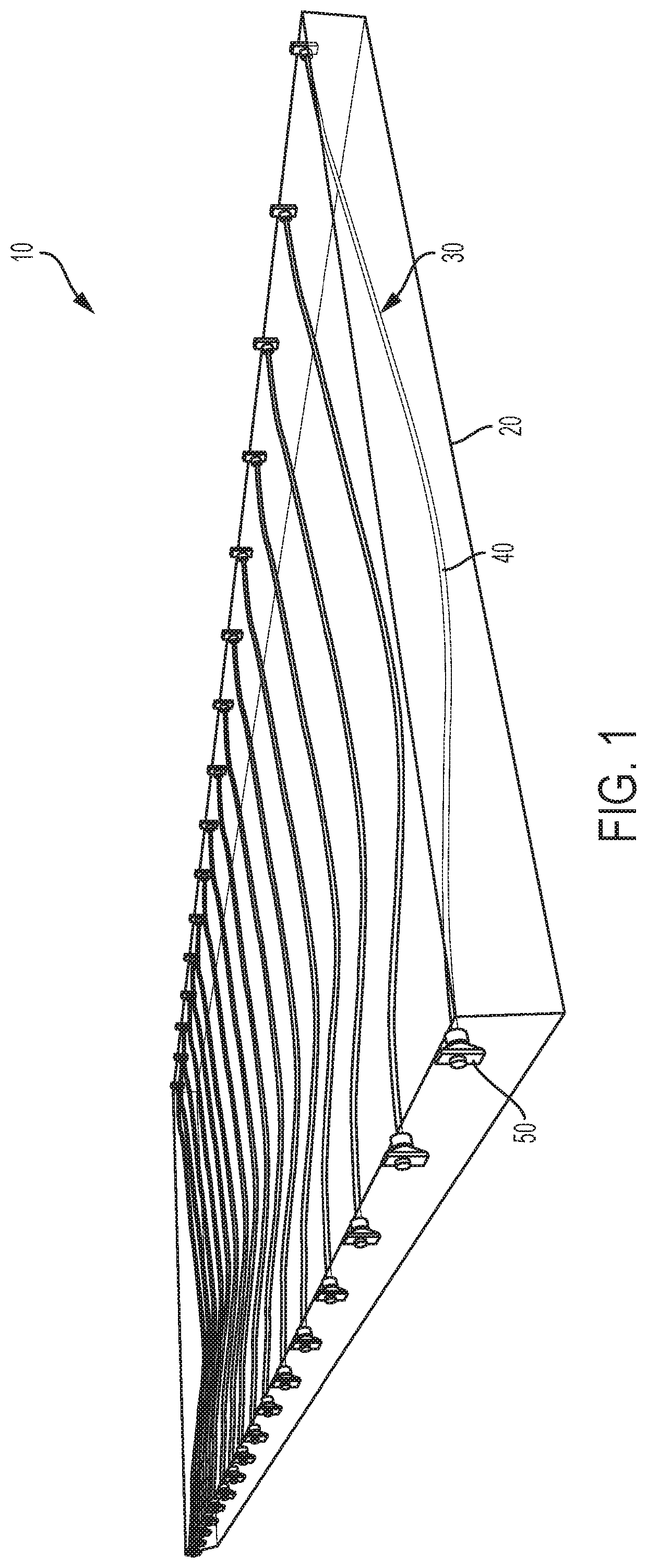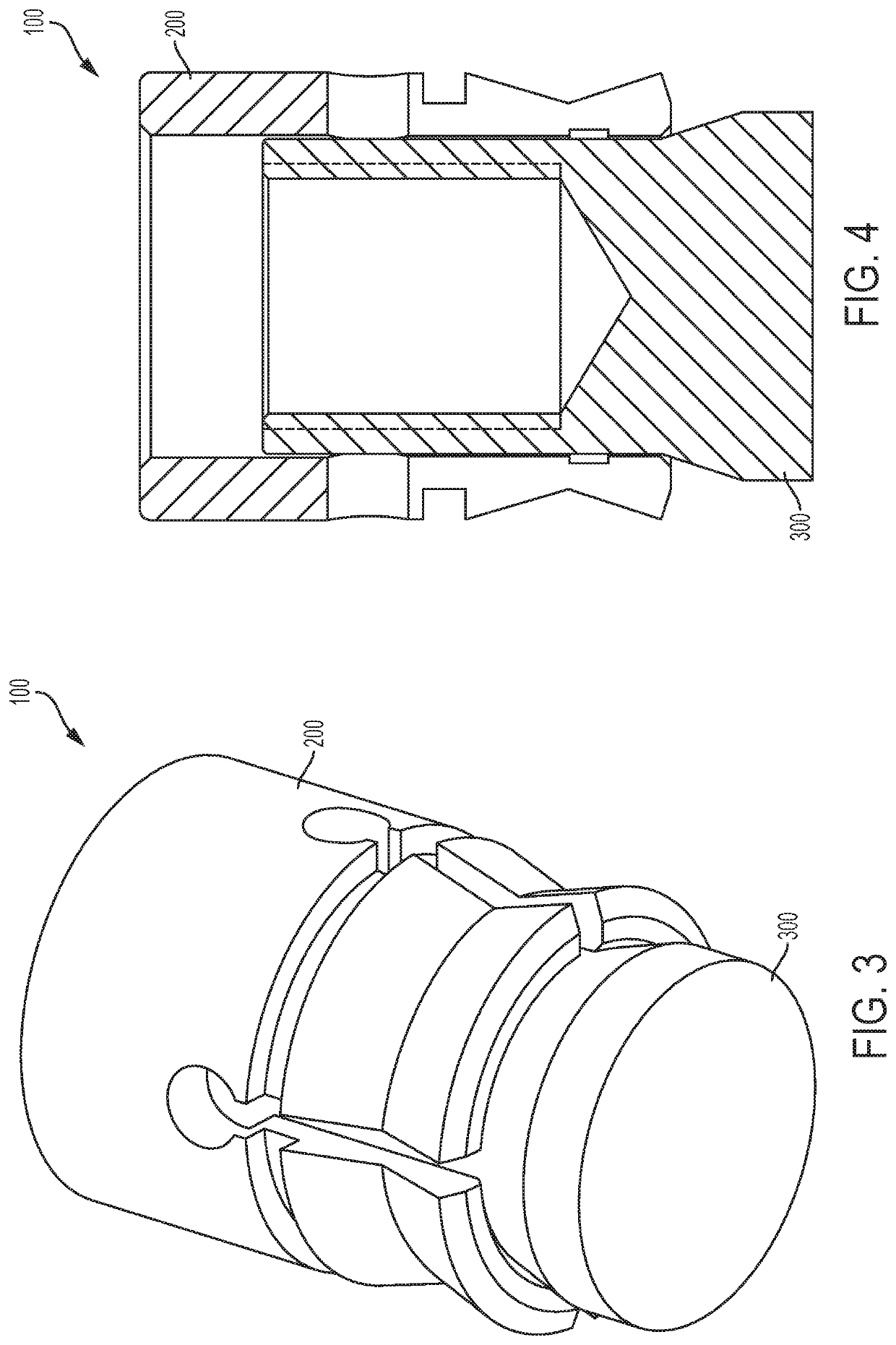Shallow undercut concrete anchor
a concrete anchor and undercutting technology, applied in the field of shallow undercutting concrete anchors, can solve the problems of not being able to achieve the prior art anchor solution, and achieve the desired
- Summary
- Abstract
- Description
- Claims
- Application Information
AI Technical Summary
Benefits of technology
Problems solved by technology
Method used
Image
Examples
Embodiment Construction
[0035]FIG. 1 shows a post stressed concrete slab unit 10. Slab unit 10 includes a volume (e.g., a rectangular volume) of poured and cured concrete 20 and a plurality of tension wires 30 passing through the concrete volume 20. An individual wire 40 may be disposed at different depths in the direction of thickness of the slab based on loads expected to be experienced at particular areas of the slab when installed. Wires anchors 50 are positioned at outer surfaces of concrete 20 and tension of wires 30 may be adjusted there. With respect to the top and bottom outer surfaces of the concrete slab 20, wire 40 may be positioned within 1 or 2 inches of the outer surfaces of the concrete.
[0036]Some post cast anchors are used in PT slabs today. For example mini drop-in anchors with the following characteristics are used.
[0037]
Thread Diameter [in.]¼″⅜″½″Drill Bit Diameter [in.]⅜½⅝Embedment depth [in.]⅝ (16 mm)¾1 (25.4 mm)Threaded Depth [in.]⅜ 13 / 32⅝Installation Torque [ft-lbs]3510
[0038]These m...
PUM
 Login to View More
Login to View More Abstract
Description
Claims
Application Information
 Login to View More
Login to View More - R&D
- Intellectual Property
- Life Sciences
- Materials
- Tech Scout
- Unparalleled Data Quality
- Higher Quality Content
- 60% Fewer Hallucinations
Browse by: Latest US Patents, China's latest patents, Technical Efficacy Thesaurus, Application Domain, Technology Topic, Popular Technical Reports.
© 2025 PatSnap. All rights reserved.Legal|Privacy policy|Modern Slavery Act Transparency Statement|Sitemap|About US| Contact US: help@patsnap.com



